+ Open data
Open data
- Basic information
Basic information
| Entry | Database: PDB / ID: 3lo5 | ||||||
|---|---|---|---|---|---|---|---|
| Title | Crystal Structure of the dominant negative S17N mutant of Ras | ||||||
 Components Components | GTPase HRas | ||||||
 Keywords Keywords | ONCOPROTEIN / Ras / nucleotide exchange / dominant negative / Mg2+ / Acetylation / Cell membrane / Disease mutation / Golgi apparatus / GTP-binding / Lipoprotein / Membrane / Methylation / Nucleotide-binding / Palmitate / Prenylation / Proto-oncogene / S-nitrosylation | ||||||
| Function / homology |  Function and homology information Function and homology informationphospholipase C activator activity / GTPase complex / oncogene-induced cell senescence / positive regulation of miRNA metabolic process / positive regulation of ruffle assembly / T-helper 1 type immune response / positive regulation of wound healing / defense response to protozoan / regulation of neurotransmitter receptor localization to postsynaptic specialization membrane / Signaling by RAS GAP mutants ...phospholipase C activator activity / GTPase complex / oncogene-induced cell senescence / positive regulation of miRNA metabolic process / positive regulation of ruffle assembly / T-helper 1 type immune response / positive regulation of wound healing / defense response to protozoan / regulation of neurotransmitter receptor localization to postsynaptic specialization membrane / Signaling by RAS GAP mutants / Signaling by RAS GTPase mutants / Activation of RAS in B cells / RAS signaling downstream of NF1 loss-of-function variants / SOS-mediated signalling / Activated NTRK3 signals through RAS / Activated NTRK2 signals through RAS / positive regulation of protein targeting to membrane / SHC1 events in ERBB4 signaling / adipose tissue development / Signalling to RAS / Activated NTRK2 signals through FRS2 and FRS3 / SHC-related events triggered by IGF1R / Schwann cell development / Estrogen-stimulated signaling through PRKCZ / SHC-mediated cascade:FGFR3 / MET activates RAS signaling / SHC-mediated cascade:FGFR2 / Signaling by PDGFRA transmembrane, juxtamembrane and kinase domain mutants / Signaling by PDGFRA extracellular domain mutants / SHC-mediated cascade:FGFR4 / PTK6 Regulates RHO GTPases, RAS GTPase and MAP kinases / Erythropoietin activates RAS / SHC-mediated cascade:FGFR1 / Signaling by FGFR4 in disease / FRS-mediated FGFR3 signaling / Signaling by FLT3 ITD and TKD mutants / FRS-mediated FGFR2 signaling / FRS-mediated FGFR4 signaling / p38MAPK events / FRS-mediated FGFR1 signaling / Signaling by FGFR3 in disease / protein-membrane adaptor activity / Tie2 Signaling / Signaling by FGFR2 in disease / myelination / EPHB-mediated forward signaling / GRB2 events in EGFR signaling / Signaling by FLT3 fusion proteins / SHC1 events in EGFR signaling / FLT3 Signaling / Signaling by FGFR1 in disease / EGFR Transactivation by Gastrin / NCAM signaling for neurite out-growth / CD209 (DC-SIGN) signaling / Downstream signal transduction / GRB2 events in ERBB2 signaling / intrinsic apoptotic signaling pathway / Insulin receptor signalling cascade / SHC1 events in ERBB2 signaling / Ras activation upon Ca2+ influx through NMDA receptor / Constitutive Signaling by Overexpressed ERBB2 / Signaling by phosphorylated juxtamembrane, extracellular and kinase domain KIT mutants / animal organ morphogenesis / VEGFR2 mediated cell proliferation / positive regulation of epithelial cell proliferation / small monomeric GTPase / regulation of actin cytoskeleton organization / FCERI mediated MAPK activation / positive regulation of JNK cascade / Signaling by ERBB2 TMD/JMD mutants / RAF activation / Signaling by SCF-KIT / cellular response to gamma radiation / Constitutive Signaling by EGFRvIII / Signaling by high-kinase activity BRAF mutants / MAP2K and MAPK activation / Signaling by ERBB2 ECD mutants / regulation of long-term neuronal synaptic plasticity / Signaling by ERBB2 KD Mutants / positive regulation of type II interferon production / endocytosis / positive regulation of fibroblast proliferation / chemotaxis / Regulation of RAS by GAPs / Negative regulation of MAPK pathway / Signaling by RAF1 mutants / RAS processing / Signaling by moderate kinase activity BRAF mutants / Paradoxical activation of RAF signaling by kinase inactive BRAF / Signaling downstream of RAS mutants / GDP binding / cellular senescence / Signaling by BRAF and RAF1 fusions / insulin receptor signaling pathway / DAP12 signaling / T cell receptor signaling pathway / MAPK cascade / regulation of cell population proliferation / Constitutive Signaling by Ligand-Responsive EGFR Cancer Variants / G protein activity Similarity search - Function | ||||||
| Biological species |  Homo sapiens (human) Homo sapiens (human) | ||||||
| Method |  X-RAY DIFFRACTION / X-RAY DIFFRACTION /  SYNCHROTRON / SYNCHROTRON /  MOLECULAR REPLACEMENT / Resolution: 2.568 Å MOLECULAR REPLACEMENT / Resolution: 2.568 Å | ||||||
 Authors Authors | Nassar, N. / Singh, K. / Garcia-Diaz, M. | ||||||
 Citation Citation |  Journal: Biochemistry / Year: 2010 Journal: Biochemistry / Year: 2010Title: Structure of the Dominant Negative S17N Mutant of Ras Authors: Nassar, N. / Singh, K. / Garcia-Diaz, M. | ||||||
| History |
|
- Structure visualization
Structure visualization
| Structure viewer | Molecule:  Molmil Molmil Jmol/JSmol Jmol/JSmol |
|---|
- Downloads & links
Downloads & links
- Download
Download
| PDBx/mmCIF format |  3lo5.cif.gz 3lo5.cif.gz | 198.5 KB | Display |  PDBx/mmCIF format PDBx/mmCIF format |
|---|---|---|---|---|
| PDB format |  pdb3lo5.ent.gz pdb3lo5.ent.gz | 157.8 KB | Display |  PDB format PDB format |
| PDBx/mmJSON format |  3lo5.json.gz 3lo5.json.gz | Tree view |  PDBx/mmJSON format PDBx/mmJSON format | |
| Others |  Other downloads Other downloads |
-Validation report
| Summary document |  3lo5_validation.pdf.gz 3lo5_validation.pdf.gz | 1.3 MB | Display |  wwPDB validaton report wwPDB validaton report |
|---|---|---|---|---|
| Full document |  3lo5_full_validation.pdf.gz 3lo5_full_validation.pdf.gz | 1.4 MB | Display | |
| Data in XML |  3lo5_validation.xml.gz 3lo5_validation.xml.gz | 20.3 KB | Display | |
| Data in CIF |  3lo5_validation.cif.gz 3lo5_validation.cif.gz | 26.2 KB | Display | |
| Arichive directory |  https://data.pdbj.org/pub/pdb/validation_reports/lo/3lo5 https://data.pdbj.org/pub/pdb/validation_reports/lo/3lo5 ftp://data.pdbj.org/pub/pdb/validation_reports/lo/3lo5 ftp://data.pdbj.org/pub/pdb/validation_reports/lo/3lo5 | HTTPS FTP |
-Related structure data
| Related structure data | 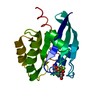 4q21S S: Starting model for refinement |
|---|---|
| Similar structure data |
- Links
Links
- Assembly
Assembly
| Deposited unit | 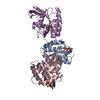
| ||||||||||||||||||||||||||||||||||||||||||||||||||||||||||||||||
|---|---|---|---|---|---|---|---|---|---|---|---|---|---|---|---|---|---|---|---|---|---|---|---|---|---|---|---|---|---|---|---|---|---|---|---|---|---|---|---|---|---|---|---|---|---|---|---|---|---|---|---|---|---|---|---|---|---|---|---|---|---|---|---|---|---|
| 1 | 
| ||||||||||||||||||||||||||||||||||||||||||||||||||||||||||||||||
| 2 | 
| ||||||||||||||||||||||||||||||||||||||||||||||||||||||||||||||||
| 3 | 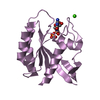
| ||||||||||||||||||||||||||||||||||||||||||||||||||||||||||||||||
| Unit cell |
| ||||||||||||||||||||||||||||||||||||||||||||||||||||||||||||||||
| Components on special symmetry positions |
| ||||||||||||||||||||||||||||||||||||||||||||||||||||||||||||||||
| Noncrystallographic symmetry (NCS) | NCS domain:
NCS domain segments:
NCS ensembles :
|
- Components
Components
| #1: Protein | Mass: 18902.217 Da / Num. of mol.: 3 / Fragment: H-Ras (UNP residues 1-166) / Mutation: S17N Source method: isolated from a genetically manipulated source Source: (gene. exp.)  Homo sapiens (human) / Gene: H-Ras, HRAS, HRAS1 / Plasmid: pProEx-HTb2 / Production host: Homo sapiens (human) / Gene: H-Ras, HRAS, HRAS1 / Plasmid: pProEx-HTb2 / Production host:  #2: Chemical | #3: Chemical | ChemComp-CA / #4: Chemical | ChemComp-SO4 / | #5: Water | ChemComp-HOH / | |
|---|
-Experimental details
-Experiment
| Experiment | Method:  X-RAY DIFFRACTION / Number of used crystals: 1 X-RAY DIFFRACTION / Number of used crystals: 1 |
|---|
- Sample preparation
Sample preparation
| Crystal | Density Matthews: 2.45 Å3/Da / Density % sol: 49.88 % |
|---|---|
| Crystal grow | Temperature: 293 K / Method: vapor diffusion, hanging drop / pH: 7 Details: 15% (v/v) PEG400, 13% (w/v) PEG8000, 0.2 M calcium acetate, and 0.1 M Tris-HCl pH = 7.0, VAPOR DIFFUSION, HANGING DROP, temperature 293K |
-Data collection
| Diffraction | Mean temperature: 100 K |
|---|---|
| Diffraction source | Source:  SYNCHROTRON / Site: SYNCHROTRON / Site:  NSLS NSLS  / Beamline: X26C / Wavelength: 1 Å / Beamline: X26C / Wavelength: 1 Å |
| Detector | Type: ADSC QUANTUM 210 / Detector: CCD / Date: 2007 / Details: Si-monochromator |
| Radiation | Protocol: SINGLE WAVELENGTH / Monochromatic (M) / Laue (L): M / Scattering type: x-ray |
| Radiation wavelength | Wavelength: 1 Å / Relative weight: 1 |
| Reflection | Resolution: 2.6→44.7 Å / Num. all: 17942 / Num. obs: 17942 / % possible obs: 99.8 % / Observed criterion σ(F): 0 / Observed criterion σ(I): 2 / Redundancy: 5.6 % / Biso Wilson estimate: 56.6 Å2 / Rmerge(I) obs: 0.1 / Rsym value: 0.1 / Net I/σ(I): 17.5 |
| Reflection shell | Resolution: 2.6→2.69 Å / Redundancy: 5.6 % / Rmerge(I) obs: 0.58 / Mean I/σ(I) obs: 3.2 / Rsym value: 0.579 / % possible all: 99.7 |
- Processing
Processing
| Software |
| ||||||||||||||||||||||||||||||||||||||||||||||||||||||||||||||||||||||||||||||||||||||||||||||||||||||||||||||||||||||||||||||||||||||||||||||||||||||||||||||||||||||||||||||||||||||
|---|---|---|---|---|---|---|---|---|---|---|---|---|---|---|---|---|---|---|---|---|---|---|---|---|---|---|---|---|---|---|---|---|---|---|---|---|---|---|---|---|---|---|---|---|---|---|---|---|---|---|---|---|---|---|---|---|---|---|---|---|---|---|---|---|---|---|---|---|---|---|---|---|---|---|---|---|---|---|---|---|---|---|---|---|---|---|---|---|---|---|---|---|---|---|---|---|---|---|---|---|---|---|---|---|---|---|---|---|---|---|---|---|---|---|---|---|---|---|---|---|---|---|---|---|---|---|---|---|---|---|---|---|---|---|---|---|---|---|---|---|---|---|---|---|---|---|---|---|---|---|---|---|---|---|---|---|---|---|---|---|---|---|---|---|---|---|---|---|---|---|---|---|---|---|---|---|---|---|---|---|---|---|---|
| Refinement | Method to determine structure:  MOLECULAR REPLACEMENT MOLECULAR REPLACEMENTStarting model: 4Q21 Resolution: 2.568→41.81 Å / SU ML: 1.25 / Isotropic thermal model: isotropic / Cross valid method: THROUGHOUT / σ(F): 1.34 / Stereochemistry target values: ML
| ||||||||||||||||||||||||||||||||||||||||||||||||||||||||||||||||||||||||||||||||||||||||||||||||||||||||||||||||||||||||||||||||||||||||||||||||||||||||||||||||||||||||||||||||||||||
| Solvent computation | Shrinkage radii: 0.9 Å / VDW probe radii: 1.11 Å / Solvent model: FLAT BULK SOLVENT MODEL / Bsol: 51.296 Å2 / ksol: 0.36 e/Å3 | ||||||||||||||||||||||||||||||||||||||||||||||||||||||||||||||||||||||||||||||||||||||||||||||||||||||||||||||||||||||||||||||||||||||||||||||||||||||||||||||||||||||||||||||||||||||
| Displacement parameters | Biso mean: 37.3 Å2 | ||||||||||||||||||||||||||||||||||||||||||||||||||||||||||||||||||||||||||||||||||||||||||||||||||||||||||||||||||||||||||||||||||||||||||||||||||||||||||||||||||||||||||||||||||||||
| Refine analyze | Luzzati coordinate error free: 0.37 Å | ||||||||||||||||||||||||||||||||||||||||||||||||||||||||||||||||||||||||||||||||||||||||||||||||||||||||||||||||||||||||||||||||||||||||||||||||||||||||||||||||||||||||||||||||||||||
| Refinement step | Cycle: LAST / Resolution: 2.568→41.81 Å
| ||||||||||||||||||||||||||||||||||||||||||||||||||||||||||||||||||||||||||||||||||||||||||||||||||||||||||||||||||||||||||||||||||||||||||||||||||||||||||||||||||||||||||||||||||||||
| Refine LS restraints |
| ||||||||||||||||||||||||||||||||||||||||||||||||||||||||||||||||||||||||||||||||||||||||||||||||||||||||||||||||||||||||||||||||||||||||||||||||||||||||||||||||||||||||||||||||||||||
| Refine LS restraints NCS |
| ||||||||||||||||||||||||||||||||||||||||||||||||||||||||||||||||||||||||||||||||||||||||||||||||||||||||||||||||||||||||||||||||||||||||||||||||||||||||||||||||||||||||||||||||||||||
| LS refinement shell |
| ||||||||||||||||||||||||||||||||||||||||||||||||||||||||||||||||||||||||||||||||||||||||||||||||||||||||||||||||||||||||||||||||||||||||||||||||||||||||||||||||||||||||||||||||||||||
| Refinement TLS params. | Refine-ID: X-RAY DIFFRACTION
| ||||||||||||||||||||||||||||||||||||||||||||||||||||||||||||||||||||||||||||||||||||||||||||||||||||||||||||||||||||||||||||||||||||||||||||||||||||||||||||||||||||||||||||||||||||||
| Refinement TLS group | Selection details: chain F |
 Movie
Movie Controller
Controller



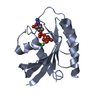

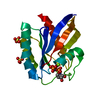
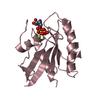


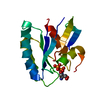
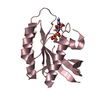


 PDBj
PDBj
























